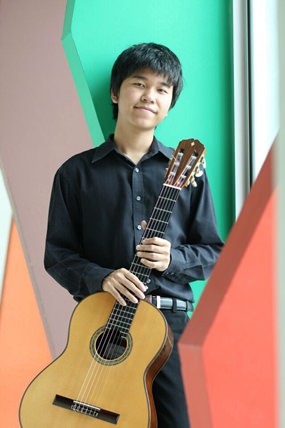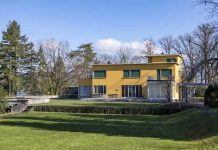Right then. Here’s today’s quiz question, so sit up straight and try to look as though you’re interested. Can you name some of the world’s top classical guitarists? You probably know the name of Andrés Segovia even if you’ve only a passing interest in classical music. In Britain, Julian Bream carried the flag for years and the Australian John Williams, not to be confused with the film-music composer, is considered one of technical masters of the guitar.
You may have come across Narciso Yepes too. He was given his first guitar when he was only four years old and later had lessons three times a week, travelling five miles there and back on a donkey. That’s dedication for you. There’s also Pepe Romero who was also a fine flamenco player and although there are other brilliant guitar players around, as far as international stars are concerned that’s probably about it. Compared to pianists, singers and conductors the list isn’t very long, so there’s probably room for a few more.
 Rising star: Hitoshi Miyashita. (Photo/Khanuengnit Thongbaion)
Rising star: Hitoshi Miyashita. (Photo/Khanuengnit Thongbaion)
The origins of the guitar go back to the lute and the Spanish vihuela. Renaissance and Baroque guitars were more elongated than the modern instrument and used double strings called “courses”. Each pair of strings was tuned to the same note and plucked simultaneously producing a bright sound, rich in overtones. Although some guitars had up to six courses (a total of twelve strings), during the seventeenth century the four-course guitar was probably the most popular. These double-stringed instruments must have been killers to tune and they eventually fell out of fashion, giving way to single-stringed guitars.
The second half of the eighteenth century saw the appearance of numerous player-composers, notably Ferdinando Carulli, Fernando Sor and Mauro Giuliani. The father of modern guitar playing technique is considered to be Francisco Tárrega, one of the great virtuosos and teachers of the late nineteenth century. The famous little melody which is heard on Nokia mobile phones is taken from one of his many guitar compositions.
The classical guitar repertoire is enormous and although much of it consists of solo works, there are a good many concertos too. Rodrigo’s two concertos have justifiably become the most familiar, along with those of Castelnuovo-Tedesco, Mauro Giuliani, Villa-Lobos and the Mexican composer Manuel Ponce.
Mauro Giuliani (1781-1829): Guitar Concerto No 1 in A major. Armin Egger (gtr) Taipei Century Symphony Orchestra cond. David Liao (Duration: 32.14; Video: 360p)
Rejoicing in the name of Mauro Giuseppe Sergio Pantaleo Giuliani, he was the leading guitar virtuoso of the early 19th century. He lived in interesting times because the so-called classical period was drawing to a close and many composers were turning away from what must have seemed increasingly old-fashioned. Giuliani was an almost exact contemporary of Beethoven with whom he was acquainted, along with some of the most influential people in Austria’s high society.
He wrote over a hundred and fifty works for guitar which form the core of early nineteenth-century guitar music. This concerto – the first of three – harmonically and stylistically seems to reflect the spirit of the times, especially in the delightfully sunny and joyful last movement. It was first performed in Vienna in 1808 with Giuliani himself as soloist and it received a warm ovation from the audience. According to those who heard him play, his expression and tone were astonishing. In the words of one writer, “he made the instrument sing”.
Malcolm Arnold (1921-2006): Guitar Concerto, Op. 67. Hitoshi Miyashita (gtr), Thailand Philharmonic Orchestra cond. Alfonso Scarano (Duration: 23:35; Video: 480p)
This work dates from 1959 and was commissioned by Julian Bream. Like so much of Arnold’s music it shows subdued influences of jazz and although he wrote nine symphonies, seven ballets and two operas he’s probably best-known for his film music. He composed 132 film scores and won an Academy Award for the music to David Lean’s movie The Bridge on the River Kwai which was filmed not in Thailand as was generally supposed, but in Sri Lanka.
This performance features the talented young Thai-Japanese guitarist, Hitoshi Miyashita. Born in Phuket, Hitoshi began his guitar studies at the age of twelve with Wanchai Saiwilai and won a scholarship to the Young Artist Program at Mahidol University’s College of Music. He currently studies with Dr. Paul Cesarcyzk and has already given performances in Germany, Japan, Nepal, the Czech Republic, Switzerland and Taiwan.
Although Hitoshi says that he’s “not a trophy hunter” he’s won many awards at guitar competitions in Spain, India, Russia, Tokyo and the Philippines as well as in his native Thailand. He recently won a scholarship to study at the prestigious University of Music and Performing Arts in Vienna, starting this October. Hitoshi is one of the rising stars of the classical guitar but at least, unlike Narciso Yepes, he won’t have to travel to his guitar lessons on the back of a donkey.




